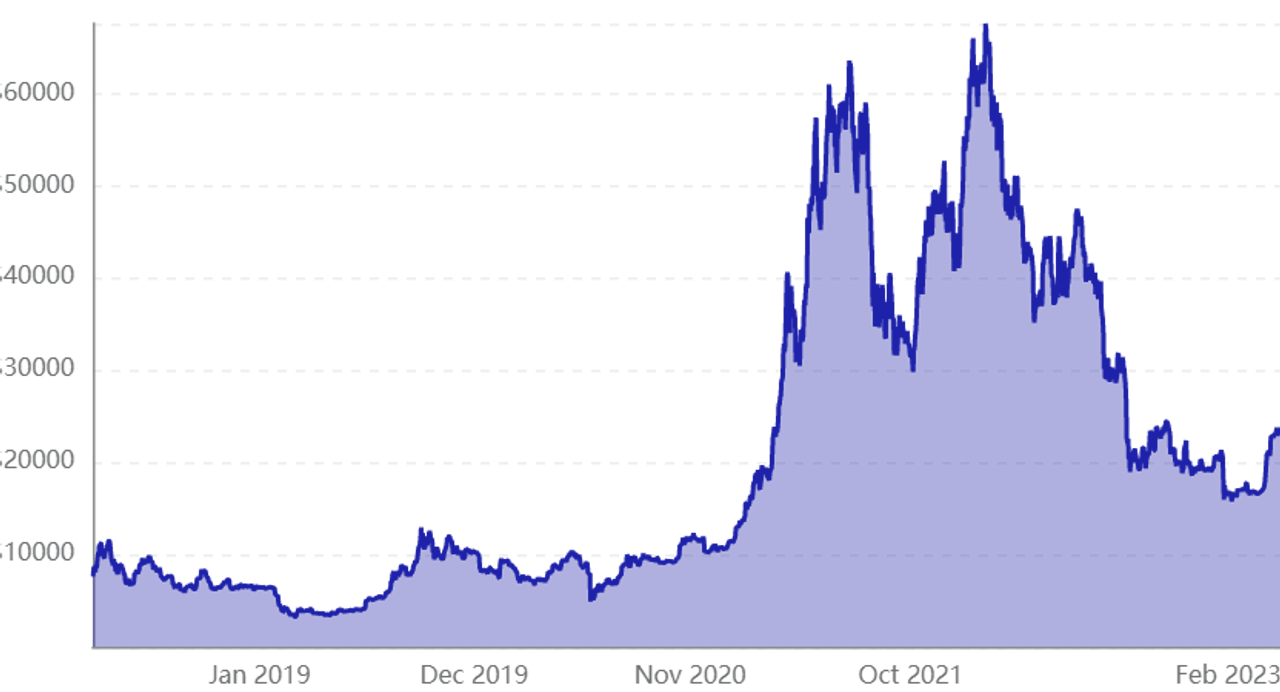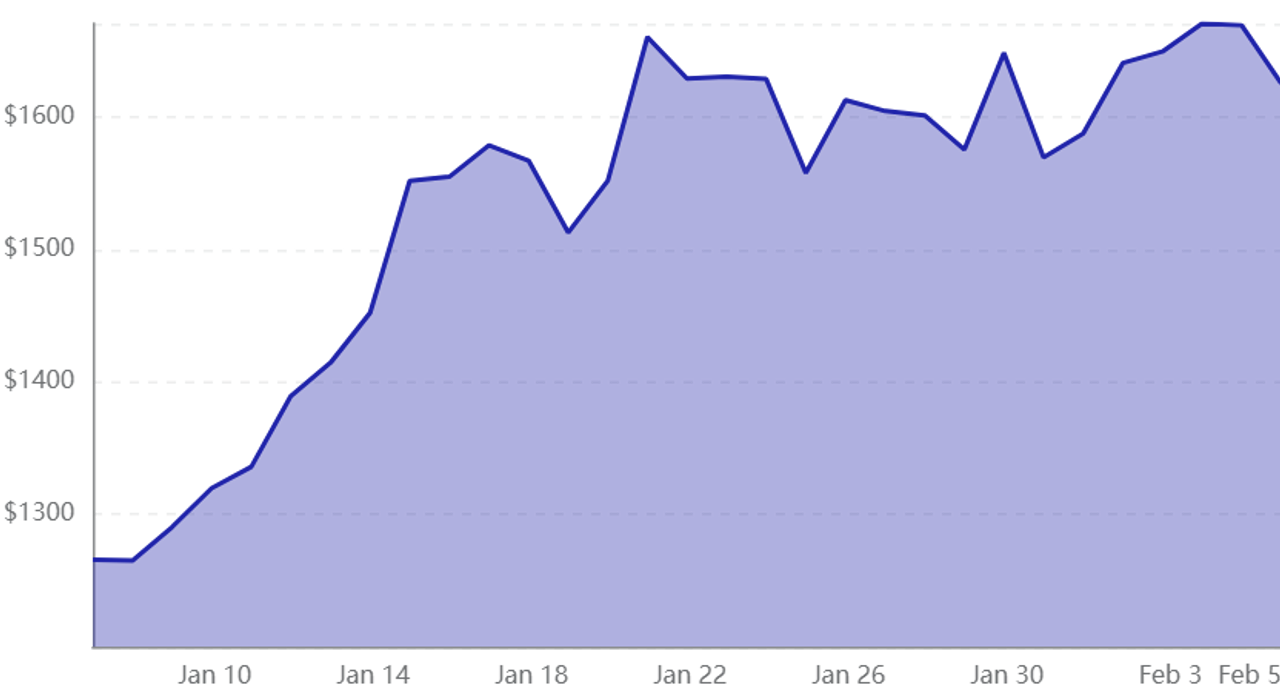Share on
- Copy link
The decision between investing in Bitcoin or Ethereum depends on an individual's willingness to take on risk.
Last updated Feb 9, 2023 at 12:56 PM
Posted Feb 9, 2023 at 12:56 PM

Investment in cryptocurrencies has been a topic of interest for some time now. Bitcoin, the first cryptocurrency to be traded, was introduced in 2009 with a value of less than a penny per token. Despite fluctuations, the price of Bitcoin has steadily increased over the years and reached a record high of $68,990 in November StartFragment2021. Ethereum's native token, Ether, was introduced in 2015 with an initial value of $2.83 and reached its highest value of $4,865 in November 2021.
The cryptocurrency market is known for its instability, but Bitcoin and Ethereum are seen as the two safest options for investors. These two cryptocurrencies have a long history, have withstood market downturns, and have substantial liquidity. They represent approximately 60% of the total value of the cryptocurrency market. Bitcoin and Ethereum, the two largest cryptocurrencies by market value, have distinct differences in their purpose and internal workings. As investors consider which to purchase, it's important to understand their investment outlook and the key factors that differentiate them.
Bitcoin stands out as the dominant cryptocurrency. As of January 22nd, the total worth of all Bitcoins was around $440 billion. The entire cryptocurrency market was valued at about $1 trillion. Ethereum, the second-largest digital currency, has a value of approximately $199.2 billion. The following are key factors that investors should consider when evaluating Bitcoin (BTC) in the investment decision between Bitcoin and Ethereum: BTC attracts significant interest from major investors, with institutional investors becoming increasingly favorable towards the cryptocurrency despite the SEC's rejection of the Winklevoss twins' proposal for a Bitcoin ETF. In late 2017, CME Group made it possible for investors to invest in future price predictions by offering futures contracts for Bitcoin.
This trend of institutional acceptance continued in 2021 with the launch of the ProShares Bitcoin Strategy ETF (BITO), which became the first SEC-approved cryptocurrency-based ETF. These developments demonstrate the growing acceptance of BTC as a legitimate investment option. Bitcoin was able to gain institutional acceptance more quickly due to its early dominance, as CME launched futures contracts for Ether in February 2021. However, there still doesn't exist an ETF that tracks ETH price, even through futures contracts.
Not only are investors able to access BTC, but everyday consumers can also earn it through platforms like Lolli. Lolli is the first Bitcoin rewards program that lets people earn BTC while shopping online, and has since expanded to include in-person shopping rewards with its Card Boosts feature. This allows consumers to convert their regular credit and debit cards into Bitcoin reward cards when shopping at Lolli partner stores.
Over 10,000 merchants, including well-known brands such as Nike, Walmart, Best Buy, McDonald's, and Dunkin' Donuts, offer rewards through Lolli.
The fact that several billion-dollar companies have decided to hold Bitcoin on their balance sheets is seen as a major endorsement of its permanence and stability. Leading analytics firm Microstrategy is the largest corporate owner of Bitcoin, but even well-known companies such as Square (previously known as Block) and Tesla have chosen to hold Bitcoin as a substitute for cash. There are currently no well-known companies that have invested in Ethereum as an alternative to holding cash. However, the fact that major companies like Square and Tesla have embraced holding Bitcoin on their balance sheets could potentially drive significant growth for the cryptocurrency. The Limited supply of Bitcoin is one of the reasons why some view it as digital gold. The total supply is limited to 21 million, and nearly 92% of that, or around 19.3 million, has already been mined. This scarcity, unlike gold which can have new reserves discovered, is a factor that makes Bitcoin appealing to some investors.
The creation of new Bitcoin is reduced every 210,000 transactions through a process called Bitcoin halving, with each halving reducing the pace of Bitcoin creation in half. The most recent halving took place in May 2020, and the next one is expected to occur in 2024.

It is important to understand the motivations behind Bitcoin and Ethereum before making a decision on which cryptocurrency to invest in. Decentralized finance and versatility. Ethereum is a leader in the rapidly growing decentralized finance (DeFi) space and enables secure financial transactions through the use of smart contracts. These contracts allow decentralized applications to operate automatically on the blockchain once specified conditions are met.
The Ethereum network is not only used for DeFi but also supports the creation and trading of unique, non-fungible tokens called NFTs and enables the development of decentralized applications for gaming, gambling, and cryptocurrency trading.
The total number of ETH in circulation is unlimited, with over 122 million currently available. However, the "Merge" event in 2022 is expected to greatly reduce the production of new ETH tokens and may even result in a deflationary effect where more ETH will be destroyed than created each year. There is no set limit on the amount of ETH that can exist, and its circulating supply will be determined by various factors in the future. Unlike Bitcoin, there is no official ceiling on the amount of ETH that can be produced.

Network utility. It has been suggested that comparing Bitcoin and Ethereum is like contrasting gold and electricity. While Bitcoin's only practical use is as a store of value, Ethereum has numerous utilities. It is the foundation for the issuance of other cryptocurrencies, the trading of NFTs, and the growth of decentralized finance through its capability to execute smart contracts. Ethereum's high gas fees. ETH has a disadvantage compared to BTC in terms of transaction fees. Transactions on the Ethereum network are quicker than those on the Bitcoin network, but they come with a higher cost, called gas fees. The gas fees for Ethereum transactions, which pay the participants who validate transactions, can be high, especially for smaller transactions. Despite efforts to increase the scalability and lower gas fees, as of 2023, the fees can still be substantial. Skewed energy consumption dynamics. The most recent difference between Bitcoin and Ethereum is that Ethereum completed its "Merge" in September 2022, which switched the network from using a proof-of-work (PoW) mechanism to a proof-of-stake (PoS) mechanism. As a result, the energy consumption of Ethereum is projected to decrease significantly, by more than 99%. This reduces one of the biggest criticisms of cryptocurrencies, which is their high energy consumption and carbon footprint, while Bitcoin, still using PoW, has not addressed this issue yet. Now that Ethereum has switched to PoS, validators must possess a certain amount of Ether to approve a block of transactions, as opposed to using computing power to complete the blockchain. A capped vs. unlimited maximum supply. Even though the Merge is predicted to significantly lower the annual production of new ether, there is still no hard limit.
The choice between investing in Bitcoin or Ethereum ultimately depends on the investor's tolerance for risk. Both cryptocurrencies have the potential for good returns as the world becomes increasingly digital and accepting of cryptocurrencies. Bitcoin is more established and well-known, making Ethereum a slightly riskier investment.
Like many investments, the higher risk of Ethereum could lead to higher returns. Both Bitcoin and Ethereum have moved beyond the experimental phase and are now established assets that risk-tolerant investors should consider seriously, even if they haven't previously considered investing in cryptocurrencies.